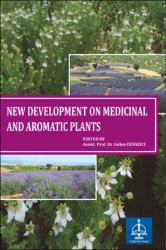| dc.contributor.author | Kaynar, Hülya | |
| dc.contributor.author | Tonus, Emine | |
| dc.date.accessioned | 2022-05-13T12:34:55Z | |
| dc.date.available | 2022-05-13T12:34:55Z | |
| dc.date.issued | May/2021 | tr |
| dc.identifier.citation | Kaynar, Hülya. Sivas Cumhuriyet Üniversitesi, Mimarlık Güzel Sanatlar ve Tasarım Fakültesi, Grafik Sanatlar Bölümü | tr |
| dc.identifier.isbn | 978-625-7636-90-2 | |
| dc.identifier.uri | https://hdl.handle.net/20.500.12418/13085 | |
| dc.description.abstract | The negative consequences of rapid industrialization experienced today
pandemicallay, terms of environment and human friendliness, has
gained importance. Natural procedures that do not harm nature and
people, use natural raw materials and do not leave chemical waste have
started to be investigated again. The healing properties of plants against
diseases have been known for thousands of years. Recently, there has
been an awareness of what should be done to avoid getting sick before
treating a disease. In this context, to take protective precautions
preventive f, it has become the priorities of developed countries. The
usage areas of plants have also been expanded. In addition to treatment,
natural substances and herbs have been used in preventive folk
medicine.
It is known that the licorice plant, which has been used in the south and
south-eastern provinces of our country for many years, has an important
place among medicinal aromatic plants and is good for many diseases.
In this study, dyeing experiments were carried out with licorice root in
order to expand the usage areas of plants and to create an alternative to
chemical substances. The results obtained have been evaluated in terms
of the textile industry. When the results of the fastness tests are
examined, it is seen that the light fastness which is an important feature
for the dyes used in the textile industry, is at a good level. Different
results were obtained in friction fastness. As a result, it has been
determined that licorice root can be used as a dye in the textile sector
by preventing dye erosion by natural methods. | tr |
| dc.language.iso | eng | tr |
| dc.publisher | İKSAD Publishing House | tr |
| dc.rights | info:eu-repo/semantics/openAccess | tr |
| dc.subject | COLORING, FASTNESS DEGREES, LICORICE (Glycyrrhiza glabra), NATURAL DYE | tr |
| dc.title | COLORING CHARACTERISTICS AND FASTNESS DEGREES OF LICORICE (Glycyrrhiza glabra) | tr |
| dc.title.alternative | NEW DEVELOPMENT ON MEDICINAL AND AROMATIC PLANTS | tr |
| dc.type | bookPart | tr |
| dc.relation.journal | NEW DEVELOPMENT ON MEDICINAL AND AROMATIC PLANTS | tr |
| dc.contributor.department | Mimarlık Güzel Sanatlar ve Tasarım Fakültesi | tr |
| dc.contributor.authorID | 0000-0002-9442-6162 | tr |
| dc.identifier.endpage | 332 | tr |
| dc.identifier.startpage | 315 | tr |
| dc.relation.publicationcategory | Uluslararası Kitapta Bölüm | tr |
















